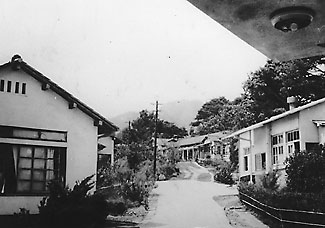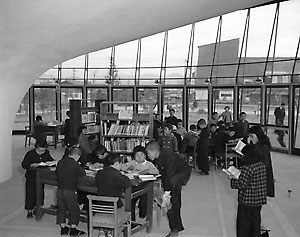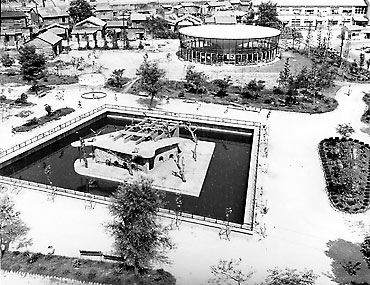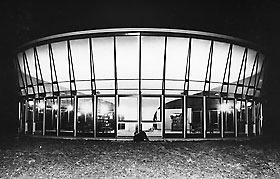Helping Hiroshima
Assistance from Emigrants
Hiroshima is a leading emigrant prefecture. That is, large numbers of people have emigrated from Hiroshima Prefecture to locations overseas. When former Hiroshima residents living in Hawaii, North America and South America learned what had happened in their native land, Hiroshima Prefecture Associations were quick to offer help.
The funds were distributed to individuals whose suffering was particularly severe. They were also used to build a dormitory for mothers left alone with children, a nursing home, a library and other welfare or cultural facilities.
 28 Goods that arrived from Hawaii 1946 Kawauchi-mura, Asa-gun Courtesy of Masaaki Nakaoka A great many goods and financial contributions were donated from the many Japanese immigrants from Hiroshima Prefecture that had settled in Hawaii. The Hawaii Society for Relief of Hiroshima War Victims carried out systematic fund-raising activities. |
 29 Donations used to construct Kisei-en Courtesy of Hiroshima Municipal Archives Funds donated in 1949 by the Hawaii Society for Relief of Hiroshima War Victims were distributed to those facing hardships, and used for the construction of "Kisei-en", a home for the elderly and a city-manager home for mothers and children. |
 30 Children's Library is open December 1952 Moto-machi Courtesy of Chugoku Shimbun A 4 million yen contribution from the Hiroshima Prefecture Association of California was used in response to a request from the Hiroshima Prefecture Association of California to construct a library for children and the Hiroshima City Children's Library was opened in 1952 in Moto-machi. |
 31 Children's Park "Monkey Island" and the Children's Library 1953 Moto-machi Courtesy of Chugoku Shimbun In addition to the housing constructed on former military land in Moto-machi, a central park with volleyball and tennis courts, a children's library and a variety of other facilities were constructed. |
|
Hiroshima City Children's Library lit up
Around 1953 Moto-machi Courtesy of Urban Development Coordination Division, Urban Development Bureau, the City of Hiroshima The characteristic Children's Library building, round with glass-lined walls, was designed by Kenzo Tange who also designed the Hiroshima Peace Memorial Museum. When first opened, the library housed some 2,300 books and later received donation of books from the Hiroshima Prefecture Association of California. |
 32 32 |
